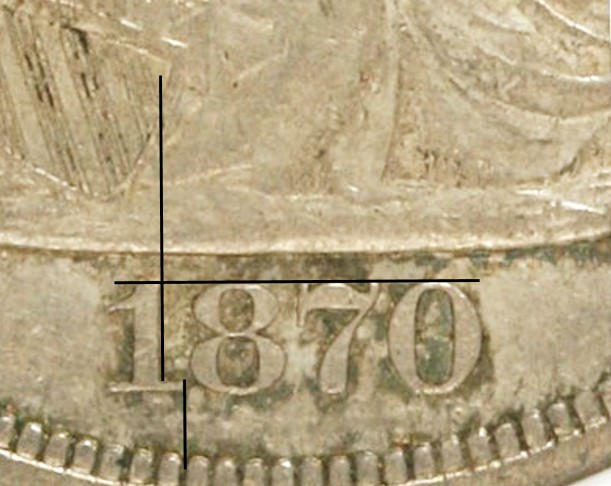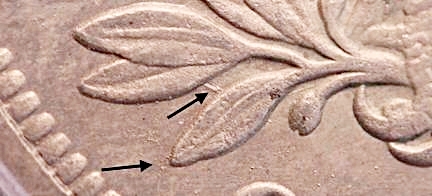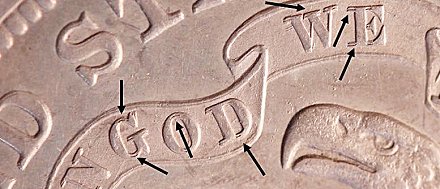|
|
Comments: This is the only use of Obverse 7 and the sixth of ten uses of Reverse A. |
Obverse 7 The photo below shows the Obverse 7 attribution grid.  1870 Obverse 7 attribution grid The Obverse 7 date is the farthest right of any seen in 1870. OC-9 die marriage is scarce but not rare. However, we’ve not been able to personally examine an example, so we’ve been unable to identify any markers. Hopefully we’ll find one in the future and add more detail to this description.
|
Reverse A displays a very strong die line, joining the lower two leaves. Also note the die rust around the end of the lower leaf.  1870 Reverse A die line The Reverse A die is strongly doubled. This will be notable on high grades, but may not be detectable on grades below VF/XF.  1870 Reverse A die doubling
|
| Photo credits:
Obverse 7: 1870 NGC AU58, from the Heritage archives. Reverse A: 1870 PCGS PR61 (mis-attributed as a proof by PCGS), from the Osburn-Cushing reference collection. |
